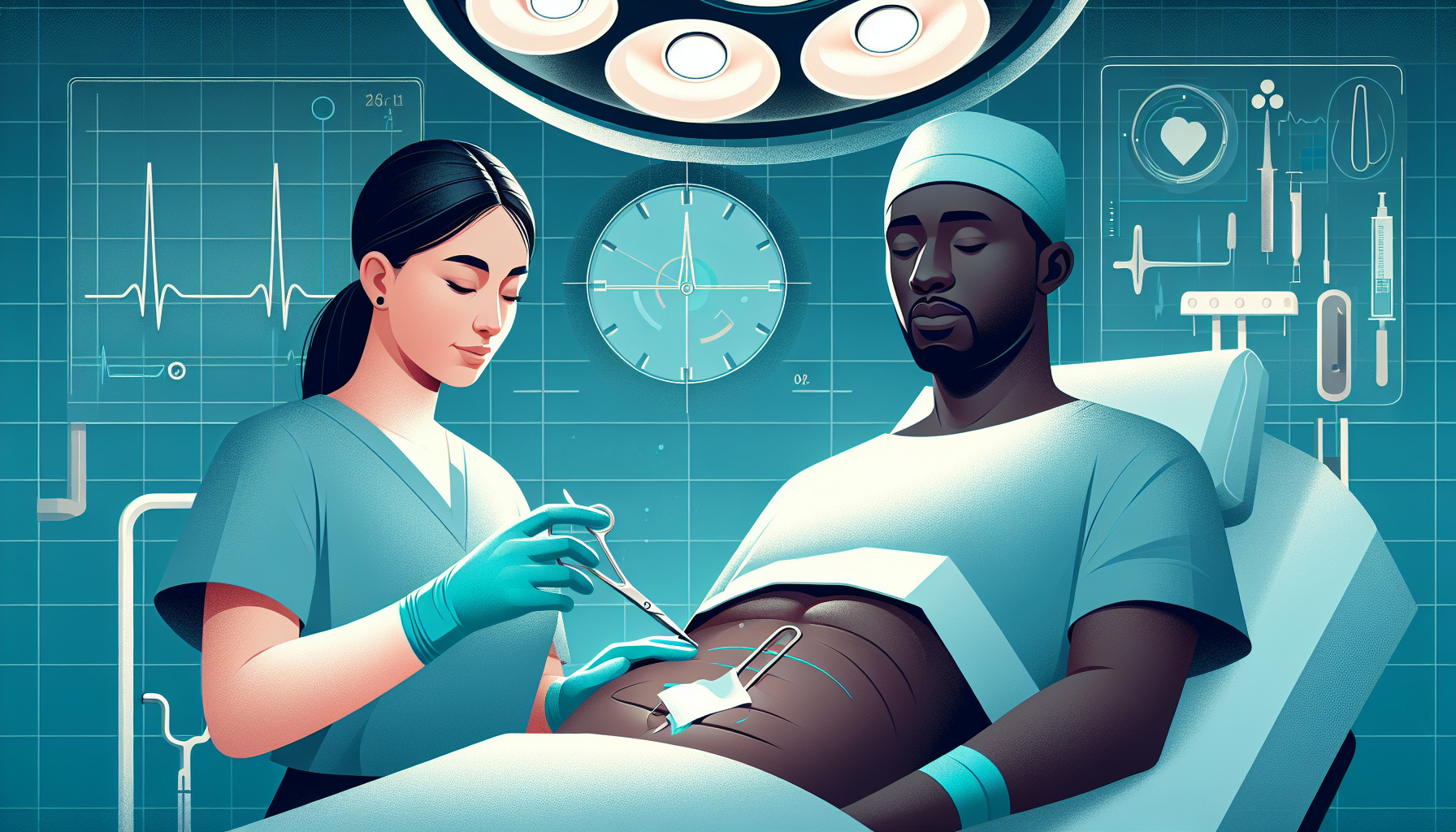Our Summary
This research paper is about finding the best treatment for a severe condition where small bulging pouches (diverticulitis) in the colon, or large intestine, burst and cause a widespread infection in the abdomen (generalized peritonitis). The researchers examined different existing treatments like removing the affected part of the colon and connecting the remaining healthy parts (resection with primary anastomosis), sometimes with a temporary detour (diverting ileostomy), another version of colon removal (Hartmann’s procedure), washing out the abdomen with laparoscopic surgery (laparoscopic lavage), and a two-step emergency method called damage control surgery.
Damage control surgery includes two steps: first, an emergency surgery where they remove the diseased parts of the colon, clean the abdomen, and use a vacuum-assisted technique to close the abdomen. Then, after 24-48 hours, they perform a second surgery to reconnect the healthy parts of the colon or conduct Hartmann’s procedure, all after ensuring the patient’s condition is stable.
After reviewing multiple studies that included 256 patients, they found that damage control surgery is a safe technique for treating this condition. It allowed for a high rate of reconnecting the colon and for more than half of the patients, they could leave the hospital without needing a temporary or permanent bag (stoma) to collect waste from the digestive system. The overall mortality rate after the surgery was 9%, and the rate of complications was 31%. The rate of leakage at the site where the colon was reconnected was 13%.
FAQs
- What is damage control surgery and how does it work in treating diverticulitis?
- What were the findings of the research on the use of damage control surgery for diverticulitis?
- How successful is damage control surgery in terms of patients not needing a temporary or permanent bag for waste collection?
Doctor’s Tip
One helpful tip a doctor might tell a patient about diverticulitis surgery is to follow post-operative care instructions closely to ensure proper healing and recovery. This may include taking prescribed medications, following a specific diet, avoiding strenuous activities, and attending follow-up appointments with your healthcare provider. It’s important to communicate any concerns or changes in symptoms to your doctor promptly to prevent complications and promote a successful outcome.
Suitable For
Patients who are typically recommended diverticulitis surgery are those with severe cases of diverticulitis that have not responded to other treatments such as antibiotics or dietary changes. These patients may have complications such as abscesses, perforations, or widespread infection in the abdomen. Additionally, patients who are at high risk for complications from diverticulitis, such as those with a weakened immune system, older age, or other underlying health conditions, may also be recommended for surgery. Ultimately, the decision to undergo surgery for diverticulitis is made on a case-by-case basis by a healthcare provider after considering the patient’s individual circumstances and the severity of their condition.
Timeline
Before diverticulitis surgery, a patient may experience symptoms such as abdominal pain, fever, nausea, vomiting, and changes in bowel habits. They may undergo diagnostic tests like a CT scan or colonoscopy to confirm the diagnosis. After a diagnosis of severe diverticulitis requiring surgery, the patient will undergo preoperative preparation which may include bowel rest, antibiotics, and intravenous fluids.
During diverticulitis surgery, the surgeon will remove the affected part of the colon and may perform additional procedures like resection with primary anastomosis, diverting ileostomy, Hartmann’s procedure, laparoscopic lavage, or damage control surgery. After surgery, the patient will be closely monitored in the hospital for complications like infection, leakage at the site of the colon reconnection, or bowel obstruction.
After recovering from surgery, the patient will gradually resume eating and drinking, begin physical activity, and manage any pain or discomfort. They will have follow-up appointments with their healthcare provider to monitor their recovery, manage any ongoing symptoms, and discuss long-term management strategies like dietary changes, exercise, and regular medical monitoring.
What to Ask Your Doctor
- What are the risks and benefits of diverticulitis surgery?
- What type of surgery would be recommended for my specific case of diverticulitis?
- What is the success rate of reconnecting the healthy parts of the colon after surgery?
- What is the expected recovery time after surgery?
- What dietary and lifestyle changes should I make post-surgery to prevent future episodes of diverticulitis?
- What are the potential complications of diverticulitis surgery?
- How long will I need to stay in the hospital after surgery?
- Will I need a temporary or permanent stoma after surgery?
- What is the long-term outlook for patients who undergo diverticulitis surgery?
- Are there any alternative treatments or less invasive procedures that could be considered for my case of diverticulitis?
Reference
Authors: Sohn M, Agha A, Iesalnieks I, Gundling F, Presl J, Hochrein A, Tartaglia D, Brillantino A, Perathoner A, Pratschke J, Aigner F, Ritschl P. Journal: BMC Surg. 2021 Mar 16;21(1):135. doi: 10.1186/s12893-021-01130-5. PMID: 33726727
